Categories
Latest Updates
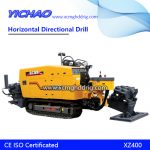
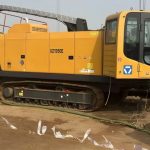
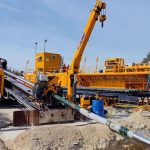
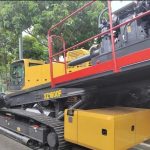
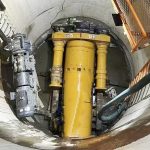
1. Hydraulic system part Some common fault handling table of hydraulic system Failure phenomenon Cause of issue Method of exclusion Under pressure 1. The pressure gauge is damaged Replace the pressure gauge 2. The pump speed is too low Check the diesel engine 3. Internal leakage of actuator Replace the seal of the actuator or replace the new actuator (cylinder …
1. Definition of polyurethane spraying An emerging trenchless pipeline repair technology that sprays the lining material onto the inner surface of the existing pipeline to form a lining covering layer to improve the pipeline’s pressure resistance, corrosion resistance, and wear resistance. 2. Scope of use (1) Structural repair or chemical protection of reinforced concrete pipes, brick pipes, cast iron pipes, …
Troubleshoot and solve the oil leakage of horizontal directional drilling rig 1. The overflow valve leaks oil 1. Treatment method for oil leakage at the bottom of the overflow valve: replace the sealing ring and remove the connecting bolt. 2. Treatment method for oil leakage at the back of the overflow valve: tighten the bolts with an Allen wrench. 2. …
1. Why is trenchless technology needed? Answer: (1) Pipeline laying, replacement, and repair work that passes through rivers, lakes, important traffic arteries, and important buildings without excavation. (2) Social reasons: It can solve the interference of traditional excavation construction on the normal life of residents, and the damage and adverse effects on the traffic, environment, and surrounding building foundations. (3) …
Although trenchless technology started later than other technologies, it has been developed by leaps and bounds in theory and construction techniques in recent years. Trenchless technology, as an extremely important construction method for laying pipelines, has its own unique advantages. It can avoid excavating the roadbed on the ground, and has the characteristics of low impact on related buildings and …
In the directional drilling process of trenchless drilling rigs, the drill bit moves in two ways, reverse drilling and only pushing. When reverse drilling, the direction does not change, and the orbit line is a straight line; when pushing, the law changes, and the orbit force is in the underground space curve. In this way, the entire drilling track is …
During the construction of trenchless drilling rigs, improper placement of the pipe joint sealing ring or damage to the pipe end due to uneven force will cause soil erosion, resulting in ground settlement and uplift. If the thixotropic mud anti-friction technology is used for pipe jacking construction, the leakage of pipe joints will also cause the loss of thixotropic mud, …
In the construction of long-distance pipe jacking by horizontal directional drilling rigs, the relay room assembly is placed at regular intervals to reduce the long-distance and large-tonnage jacking force in stages, and reduce the jacking force of the main jacking cylinder and the bearing force of the backrest of the working well. The oil cylinder seals are sealed with high …
Horizontal directional drilling rigs are becoming more and more popular in modern construction because they have the advantages of fast construction speed, low construction accuracy, and low cost. They are widely used in pipeline laying construction projects such as water supply, gas, electricity, telecommunications, natural gas, and oil. Construction characteristics of horizontal directional drilling rig: 1. The directional drilling crossing …
Horizontal directional drilling rig is a construction machine that lays a variety of underground utilities (pipes, cables, etc.) without excavating the ground surface. It is widely used in flexible pipelines such as water supply, electricity, telecommunications, natural gas, gas, and oil. In paving construction, it is suitable for sand, clay, and other ground conditions. The composition structure of the horizontal …
The horizontal directional drilling method is a technique that uses drilling equipment installed on the ground to drill into the formation at a small incident angle relative to the ground to form a pilot hole, and then expand the pilot hole to the required size and lay the pipeline. Compared with other non-excavation technologies, horizontal directional drilling technology has the …
Commonly used horizontal directional drilling steering positioning method is used to measure the angle and position information of the drilling tool while directional drilling underground. This method completes the measurement by setting up a sensing transmitting probe in the steering drilling tool, setting up a walking positioning tracker on the ground, and setting up a driller monitor on the drilling …
